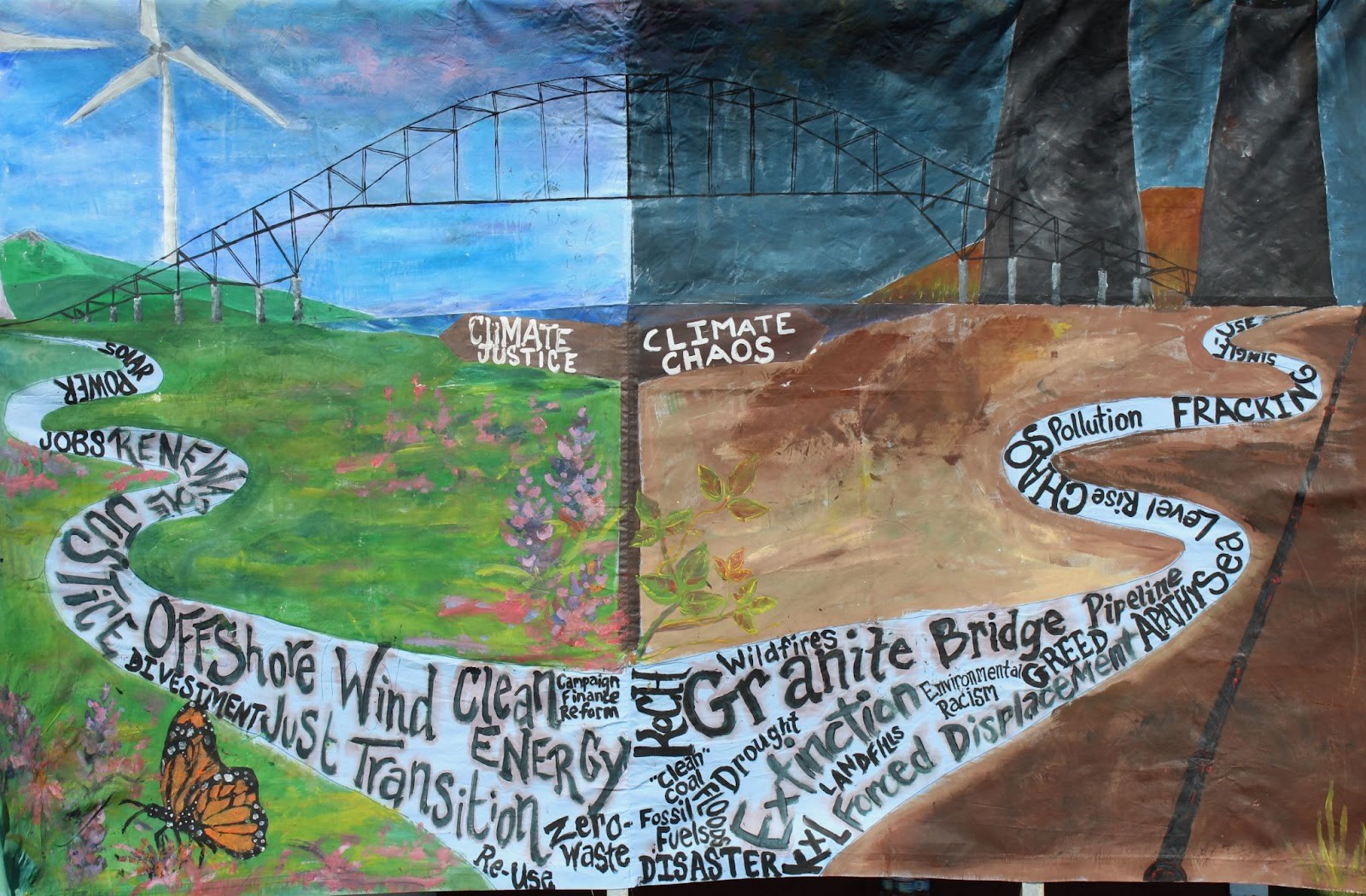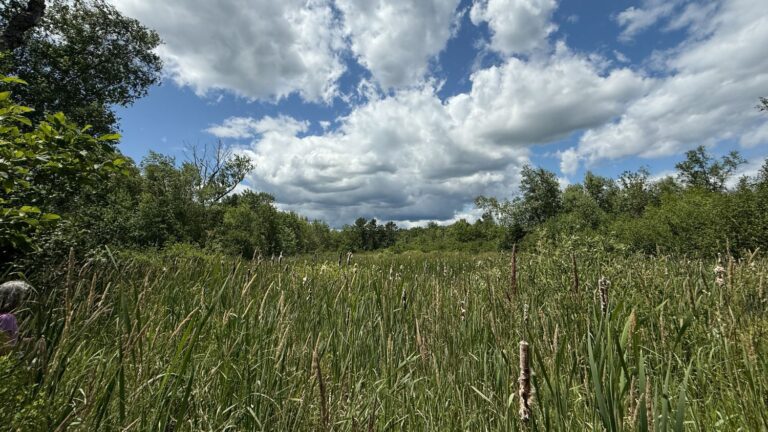A tenth grader rolls her eyes at Thornton Wilder’s Our Town in an English class on the eve of the end of the world. A hunting party of teenagers braves the perilous Canadian desert in search of food. A robotic entity surfaces longingly from degraded ocean waters it was created to clean up. A girl whose family was displaced to Ohio by a hurricane returns to an all but deserted Casco Bay.
These and other stories were written by students ages 14 to 25 at climate fiction workshop put on this fall by The Telling Room, a youth creating writing center in Portland, and Maine Climate Action Now. It showcases “cli-fi” as a multi-faceted way of reckoning with a crisis that this young generation will inherit.
“There is, I think, a perception that climate fiction means ‘dystopian’ — that it’s super sci-fi, futuristic, speculative fiction that is predictably dystopian,” said Telling Room teaching artist and workshop facilitator Meghan Vigeant. “And that is actually not the case,” she said — at least not exclusively.
The barrier, like many other useless strategies, was obsolete now that the creatures that lived in these cities were gone, stolen by the sea… Micah peered into the cracked windows lining the streets, searching desperately for something new, something extraordinary. Just as always, the only life up here was him.
“Another Creature of Flesh and Flood” by Andrea Lancia, 17, Portland High School
Dystopian cli-fi can be cathartic or cautionary, showing “what could go wrong” or the terrifying results of “business as usual.” Writer Paolo Bacigalupi’s work, featured this fall on the Climate One podcast, is an example, Vigeant said.
But too much “doom and gloom” can also backfire, she said, making people check out or panic. On the flipside, utopian stories — “where everything is perfect and we’ve achieved this magical world of equality and there are solar panels on every roof and we source all the materials from some asteroid and … climate disaster was averted” — might create false hope or complacency.
This dichotomy recalls a protest banner used back in 2019 or so by the activist group 350 New Hampshire — first at a street theater event in Portsmouth, where performers read aloud letters penned by “time-travelers” from two very different climate futures, and later at a major protest at Merrimack Station, where nearly 70 activists were arrested at what’s now the region’s last coal plant.
Vigeant stressed that there’s no wrong way to write climate fiction, whether it’s hopeful or frightening, hyper-realistic or fantastical. You can see that range in this 2017 New York Times piece about the scientific likelihood of various cli-fi works — including by the great Kim Stanley Robinson, who is always first on my mind when I think about this genre. (His epic Mars Trilogy is one of my husband’s favorites and a perpetual aspirational vacation read for me.)
For a moment, we were ice-cold with fright. And then we weren’t. … Silky threads of light now weaved across our view, and we traced their path until we found the origin: our chests. Tentatively, we tugged at a thread and unleashed a cacophony of ideas, knowledge, desires, and pains that were not our own. We let go abruptly, wincing. But accompanying the overwhelming wave of another’s humanity was a peculiar, reassuring feeling. A nameless sense of connection; unloneliness.
“The Glow” by Claire McGlinchey, 25, Center for an Ecology-Based Economy
Lately, Robinson has been focusing his writing on our own world and its precarious future, striking a tone of cautious optimism: “I decided that it was time to go directly at the topic of climate change,” he told the Times in 2022. “The real story is the one facing us in the next 30 years. It’s the most interesting story, but also the stakes are highest.”
Vigeant flagged Robinson’s book The Ministry for the Future and Grist’s Imagine 2200 project.as examples of a more nuanced, middle-ground approach she worked on with her Telling Room students: an emerging genre called “thrutopia.”
“It’s all about the process … of getting to a cleaner, greener society,” Vigeant said. “We want to empower people to make positive changes, and the philosophy behind thrutopia is showing people that there are possibilities… for how we get ourselves out of it, while also dealing with the struggles and the consequences of climate change.”
I love this idea because it feels in line with everything I’ve ever learned about effective climate communication, and about how to help people connect and reckon with something overwhelming and yet intangible — whether as a writer, an activist, a policymaker or just a regular person talking with your neighbors.
The idea of thrutopia holds space for both fear and hope at the same time, grounding both in lived experience.
It doesn’t ignore the reality of the problem or the mounting consequences of slow action; nor does it throw up its hands and abandon those who will suffer the most if nothing else is done. This form of cli-fi says the only way out is through, perhaps together, one step at a time.







